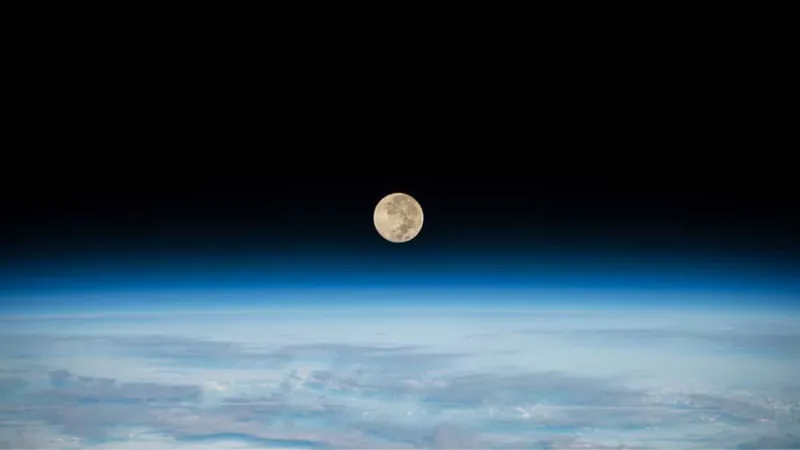
Earth Had Two Moons in the Past—Asteroid 2024 PT5 Visits Again and Will Return in 27 Years!
2024-10-05
Author: Ting
A Surprise Addition to Earth's Celestial Family
Earth has a surprising new addition to its celestial family—our planet has captured a mini-moon after snagging asteroid 2024 PT5 into its gravitational embrace! This captivating event occurred on September 29, marking the exciting return of a phenomenon that's not new to Earth. Did you know that Earth has hosted mini-moons before?
Discovery of Asteroid 2024 PT5
Asteroid 2024 PT5 was initially identified on August 7 by the Asteroid Terrestrial-Impact Last Alert System (ATLAS), with researchers Carlos and Raúl de la Fuente Marcos from Spain's Universidad Complutense de Madrid leading the discovery. They shared their findings in the Research Notes of the AAS, shedding light on the intricate dance between Earth and near-Earth objects.
History of Mini-Moons
While mini-moons are rare, they have happened before. The first recorded instance was in 1981 when asteroid 2022 NX1 was temporarily captured by Earth's gravity. It returned in 2022 and is set to visit again in 2051. Similarly, another transient mini-moon named 1991 VG passed close to Earth in February 1992 but did not complete an orbit.
Interestingly, 2006 gave us a mini-moon that defied the odds. Asteroid 2006 RH120 became gravitationally bound to Earth for a full year after its capture in July 2006, departing in July 2007. Another significant resident was 2020 CD3, which lingered in orbit for several years before escaping in May 2020.
The Current Mini-Moon's Journey
As for our newest mini-moon, asteroid 2024 PT5 is expected to follow a path similar to that of its predecessor, 2022 NX1. It will only be with us for a few days, before making its exit on November 25. Interestingly, 2024 PT5 resides in the Arjuna asteroid belt, a region characterized by space rocks that have orbits mirroring that of Earth, approximately 93 million miles from the sun. Some of these asteroids can come alarmingly close to our planet, at distances as near as 2.8 million miles.
Fascination with Cosmic Events
While the mini-moon's small size and faint light make it impossible to be viewed by amateur telescopes or binoculars (it’s just 37 feet wide compared to our Moon’s impressive diameter of 2,159 miles), its visit ignites a fascination for what lies just beyond earthly sights.
This cosmic rendezvous not only reminds us of the dynamic nature of our solar system but also invites curiosity—how many more mysteries are waiting in the vastness of space? Keep your eyes on the skies, because asteroid 2024 PT5 will be back to impress us again in 27 years!





 Brasil (PT)
Brasil (PT)
 Canada (EN)
Canada (EN)
 Chile (ES)
Chile (ES)
 España (ES)
España (ES)
 France (FR)
France (FR)
 Hong Kong (EN)
Hong Kong (EN)
 Italia (IT)
Italia (IT)
 日本 (JA)
日本 (JA)
 Magyarország (HU)
Magyarország (HU)
 Norge (NO)
Norge (NO)
 Polska (PL)
Polska (PL)
 Schweiz (DE)
Schweiz (DE)
 Singapore (EN)
Singapore (EN)
 Sverige (SV)
Sverige (SV)
 Suomi (FI)
Suomi (FI)
 Türkiye (TR)
Türkiye (TR)